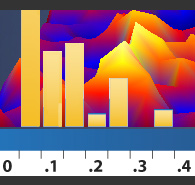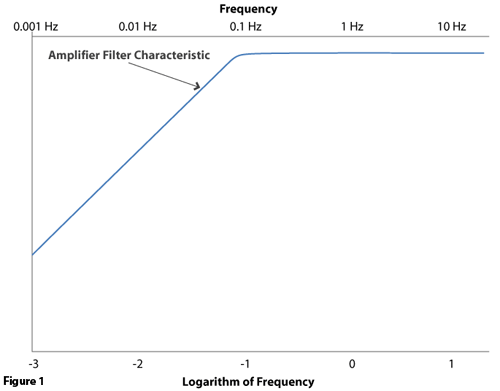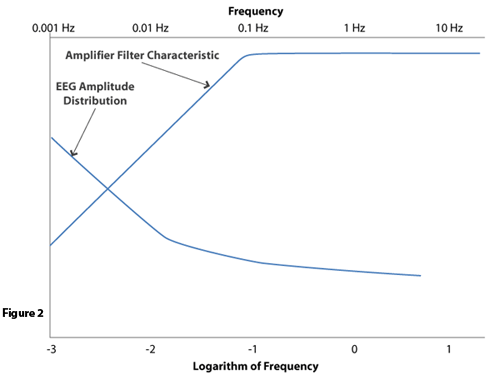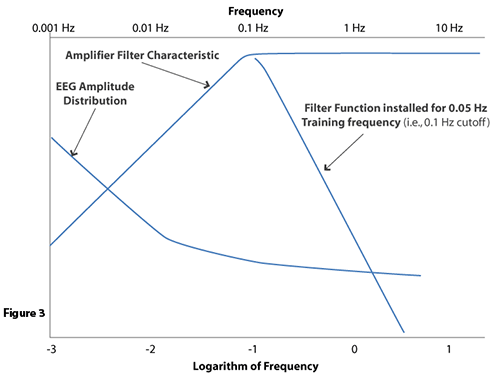Infra-low Frequency Neurofeedback Training
by Siegfried Othmer | November 24th, 2008
The following newsletter is now mainly of historical interest. Discussed here is the design of the first-generation Cygnet, which was intended for operation within the conventional EEG spectrum. There was no recognition yet of the need to cover the extremely low frequency region. The follow-on design, which became available in 2012, was optimized for operation across the entire band, including in particular the infra-low frequency region extending down to 0.1mHz. (Siegfried Othmer, 1/6/2015)
The recent newsletter on Infra-low Frequency Training raised a number of issues within our readership and within the larger neurofeedback community. The principal issues are addressed in the following.
First of all there is the issue of how we detect infra-low frequency activity with an amplifier that “cuts off” at 0.08 Hz. The Cygnet system incorporates a single stage of high-pass filtering into its design. We did so to provide more stable and more graceful operation of the system in its most common applications. Little did we know that down the line our most common applications would extend well into the frequency range that we were cutting off with our filter.
A single stage of filtering yields a gentle filter function, with an attenuation of a factor of ten for a factor of ten in frequency. This is best shown in a graph that uses logarithmic scales, particularly since we are now covering such a broad range in frequency. The amplifier transfer characteristic is shown in Figure 1. At a frequency of 0.008 Hz, for example, our system gain is a factor of ten down from the cutoff frequency of 0.08. Whether or not this presents a real problem is not a matter of the signal level, but rather of the signal-to-noise ratio. At low frequencies, we tend to refer to this as drift rather than noise, but there is no real distinction implied here.

We do have to contend with a source of drift, however, and that relates to the electrode-scalp contact. This is a particular issue with regard to gold electrodes. If it had been the tradition in EEG work to extend the bandwidth to include the slow cortical potentials, engineers could never have settled on gold electrodes as a standard for the field. The issue of drift is manageable even there, but one may have to wait for long settling times until the signal behaves itself. The fact that we discovered the utility of this kind of infra-low frequency training with gold electrodes is testimony to the robustness of the signal we are working with. Nevertheless, one always had to wait for the initial transient signals to die down before one could proceed with the training. With sintered Ag/Ag-Cl electrodes (available from www.eeginfo.com/shop) the drift problem disappears, as the initial settling time here is down to a few seconds.
As implied above, we are aided in our work by the fact that the low-frequency signals are not necessarily small. Further, they tend to increase in amplitude going down to lower frequencies in this range, with a dependence that is quite commonly observed in chaotic systems, namely a (1/f)-characteristic, where f is the frequency. This is shown in Figure 2 in approximation. The (1/f)-characteristic is an extension to lower frequency of a trend that is observable elsewhere in the EEG as well, namely the lower-frequency components tend to have higher amplitudes than the higher-frequency ones. (There are isolated exceptions such as the alpha rhythm.)

When we wish to train at low frequency we install a low-pass filter to limit the bandwidth of interest. This is shown in Figure 3. The result of the combination of the high-pass and the low-pass filter is a peaked distribution with the dominant frequency selected to match the needs of the client. This is shown in Figure 3. The same characteristic is maintained as the adjustable cutoff frequency is lowered.

Now when we look at the resulting signal we do not tend to see persistent narrow-band activity at the peak frequency that is optimal for a particular trainee. One might have expected that on the basis of the rather unusual specificity in the reward frequency for some people. Instead one sees an ebb and flow of activity at all frequencies within the range of the filter.
What, then, does the feedback involve at these low frequencies? We are now tracking the slow cortical potential itself, as opposed to the envelope of activity as we would at the SMR frequency, for example. The brain must be able to detect the correlation of its own activity with the unfolding slow cortical potential on the screen. We’ve known that the brain is capable of this by virtue of Birbaumer’s work with SCP-based training. When one gives the brain even more information about itself to relate to, matters should only go even better.
The important take-home message is that the brain is still involved with what is going on in the moment, much as it is with traditional SMR-training. Once the EEG information gets translated into a video game to be presented to the client, long-term history is pretty much lost. So is subtlety. Nevertheless, the brain appears to be quite able to recognize the correlation of its own activity with what is happening on the screen.
The extreme parametric sensitivity on reward frequency may be an indication that the training is working almost too well. We’ve got a Scylla and Carybdis problem here with training either too high or too low. The moment other seasoned neurofeedback practitioners get interested in this work, they will find out that the technique cannot be deployed casually. They will actually have to learn how to do this well—hopefully before they get themselves in hot water with their clients.
One way to look at the extreme frequency sensitivity of this training at the low frequencies is as follows. The brain is clearly organized as a change detector when it comes to sampling the environment. When we increase the bandwidth upward in our low-frequency training we are admitting higher-frequency activity that will tend to draw the attentions of the brain preferentially. So one could argue that in this range it is always the highest-frequency activity that drives the process. The existence of our high-pass filter makes this true in our case even if it weren’t true in general. So the only way to get the brain to pay attention to the lower frequencies in the signal is to mask the higher-frequency activity. In this view, the function of the low-pass filter is primarily to mask the higher-frequency activity.
It is quite possible that among all the factors operative here, there is also the abiding question of tolerance. A thoroughly disregulated nervous system may not be able to tolerate the higher-frequency training (within the SCP-range, that is) steady-state, and thus by limiting the signal bandwidth we are taking the process down to within the zone of tolerance of a particular nervous system.






Gee whillikers, Sieg,
All the electro-scientific “explication” befuddles me, but hopefully EEG experts with more ken can understand all that and decide whether it indeed makes sense(I got D’s in Chemistry and Stats!).
I guess the only way I’m gonna really gain a better understanding is to pony up for some more training! It sounds fascinating and particularly useful for the vets.
Hope all is well for you and Sue and Kurt.
Ed
Hi Ed–
We do expect that most of the veterans will be training at low frequencies.
It will be quite a while before the EEG experts make sense of this, despite all of the new interest in infra-low frequency EEGs.
Right now it belongs in the hands of the clinicians to explore.
Why not join us in Hawaii in February–you’ll be ready for a break from winter by then.
Siegfried Othmer
Siegfried,
Thank you, thank you, thank you. I have been looking for details such as these. Do you have more documentation on the mathematics of the training?